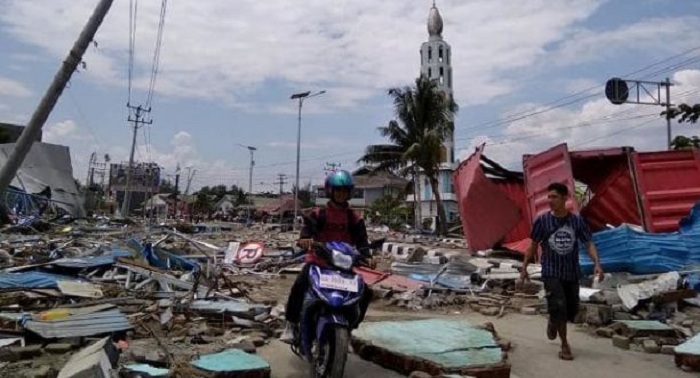New Delhi, November 29, 2023: Earthquake processes, even relatively smaller ones, have their reflection in the ionosphere, as they influence the amplitudes and periods of coseismic ionospheric perturbations (CIP) along with factors such as geomagnetism and line-of-sights geometry, according to a novel study. The finding can help observing earthquake source processes from the space which may pave the way for deciphering earthquake precursors using space-based observations.
Coseismic vertical crustal movements excite acoustic waves (AWs) in the atmosphere. The waves propagate upward, reach the ionosphere, causing disturbances in numbers of electrons along the line-of-sights connecting ground Global Navigation Satellite System (GNSS) receivers and satellites. These disturbances are called as coseismic ionospheric perturbations (CIP). Such near-field CIP occurs normally within 500–600 km of the source. Most of the past studies assumed point sources at the maximum vertical displacements for direct AWs and such near-field CIP had been modeled by assuming single acoustic pulse from the surface. However, large earthquakes involve ruptures of multiple fault segments spanning hundreds of kilometres and for such great earthquakes; such a single source assumption may become inappropriate.
Scientists from Indian Institute of Geomagnetism (IIG), an autonomous institution of Department of Science and Technology, in their attempt to verify this assumption for relatively small earthquakes, (less than 8 Mw) analysed near-field CIP of 2023 February Turkey Earthquakes. They demonstrated for the first time, that ionospheric perturbations generated by relatively small earthquakes could also contain contributions from multiple sources along the fault. On 6 February 2023, a devastating earthquake of Mw 7.8 (EQ1) occurred in southern Turkey near the Turkey-Syria border, one of the largest strike-slip events recorded on land. Around 9 hrs later an earthquake of Mw 7.7 (EQ2) occurred to the north of EQ1. Studying CIP generated by EQ1 and EQ2, the study published in Geophysical Research Letters, showed for the first time that CIP shows variety of amplitudes and periods for different satellite-station pairs due to combinations of sub-CIPs from multiple sources with different time lags.
They elaborated that interference of acoustic waves (AWs) from these multiple sources makes differences in the perturbations amplitudes and periods at Global Navigation satellite System (GNSS) stations in different azimuths from the epicentre.
Demonstrating that the CIP of EQ2 has much larger amplitude and slightly shorter period than EQ1 the scientists explained these differences assuming a single source and higher background ionospheric electron densities.

